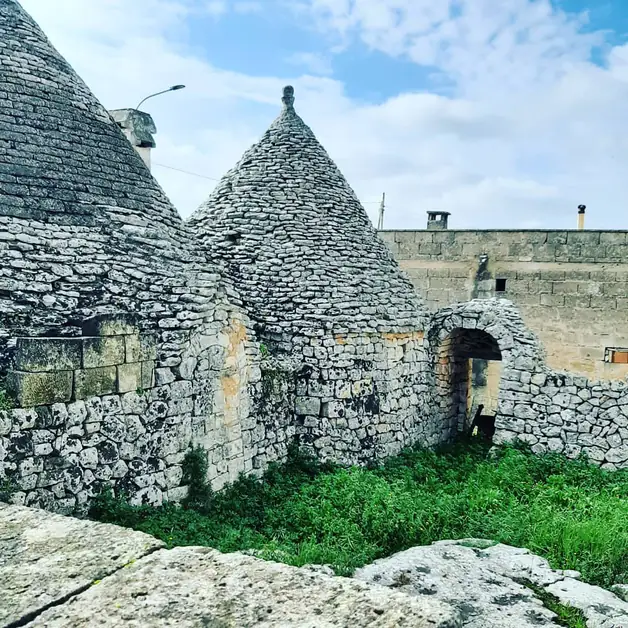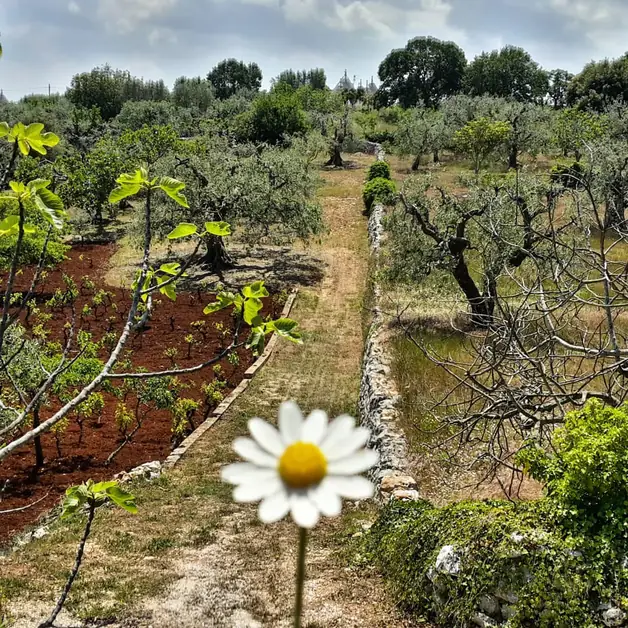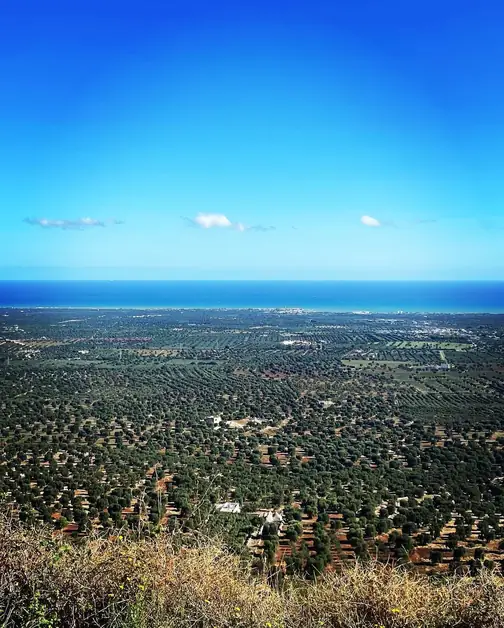Ancient Trulli in Caranna
Discover the ancient trulli of Caranna, a journey into authentic Puglia.

What are trulli? Trulli are traditional dry stone constructions with conical roofs, typical of the Itria Valley. In Caranna, a hilly district of Cisternino, many can be found in their original state. They have not been transformed into tourist structures or modern homes. They remain just as they were: authentic. Where are these trulli located? Hidden among the olive trees, along dry stone walls and amidst dirt paths. They are not always marked on maps. But just walking slowly through the country lanes around Caranna will lead you to them, as if by magic. Why visit them? To experience something unique. Observing an ancient, unrenovated trullo means touching the agricultural history of Puglia. The stones tell centuries of labor and simple living. They are silent, yet they speak. What does it feel like to stand in front of one of these trulli? As if time has stopped. You feel a sense of peace and wonder. The silence of the place is interrupted only by the song of birds and the wind among the olive trees. It is a contemplative experience, far from mass tourism. What details can you notice when observing them up close? The details: slightly uneven conical roofs, plants growing on the stones, faded wooden doors. Some trulli still preserve ancient objects inside, visible through the cracks: an old farming tool, a broken chair, a rusty lantern. Can you take photos? Yes, but with respect. Unrenovated trulli are often on private land. It is advisable not to enter, but to observe them from outside and capture the atmosphere. Photographs, especially at sunset, have a unique charm: the warm light on the rough stones, the contrast with the green countryside. How do you get to Caranna? Caranna is located on the hill between Cisternino and Fasano. It is easily reachable by car, traveling along the provincial roads. Once you arrive, you can park near the small church of the village and start walking. The light trekking among the trulli is ideal for everyone. What is the best time to visit? Spring and early autumn are the ideal periods. The weather is mild, the fields are in bloom, and the colors of the Apulian countryside are vibrant. Even winter has its charm, with light fog enveloping the conical roofs, making the experience even more evocative. Are there recommended paths? There are no official trails, but the locals are friendly and can suggest a walk through the districts. Some paths also lead to hidden trulli in the holm oak forest, offering panoramic views of the plain of olive trees. What should you bring with you? Comfortable shoes, a water bottle, a camera, and a bit of curiosity. Nothing more is needed. There is no need for guides or reservations. Just let yourself be guided by instinct and the landscape. Why is Caranna special? Because it is still genuine. Less known than other areas of the Itria Valley, it has remained true to its roots. The unrenovated trulli are the most evident proof. In Caranna, you can breathe the Puglia of the past. Can you conclude the visit with something typical? Yes, perhaps stopping at a small bakery or shop in Cisternino or Ceglie Messapica to taste wood-fired bread, focaccia, or local cheeses. After a walk among the trulli, the taste is even more authentic. What type of tourist appreciates this experience the most? Those who love simplicity, nature, photography, and history. Those who do not seek only comfort and resorts, but real emotions. Those who want to take home a memory made of silence, light, and stone. In Caranna, even the trulli that seem forgotten have a soul. And knowing how to listen to it is the true privilege of the attentive traveler.




